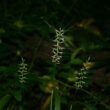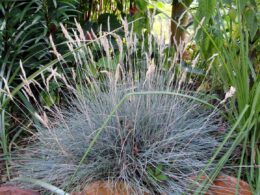Porcupine Grass
Porcupine grass, also known as maiden grass, Chinese silver grass, Miscanthus sinensis, the eulalia, is a species of flowering plant in the grass family. It is native to eastern Asia, where it grows in open woodlands and fields. Chinese silver grass is a popular ornamental plant, and its showy inflorescence is often used in dried arrangements. It gets its name from its sharp, spiky leaves, which resemble porcupine quills.
Porcupine grass is known for being exceptionally tough and hardy, making it a popular choice for use in lawns and golf courses. It is also relatively drought-resistant, meaning that it does not require excessive watering to stay healthy. However, porcupine grass can be challenging to care for, as it requires regular mowing and trimming to prevent it from becoming overgrown. For this reason, many homeowners opt to hire a professional lawn care service to handle the maintenance of their porcupine grass lawns.
Hesperostipa Spartea
Hesperostipa spartea, commonly known as needle grass, is a species of grass native to North America. Needle grasses are characterized by their sharp, needle-like leaves, which give the plants their name. Hesperostipa spartea is a perennial and belongs to the porcupine grass family. The plant produces flowers in the summer, which are pollinated by insects such as bees. The seeds of the plant are eaten by birds and small mammals, such as mice and voles. Needle grasses are an important part of the ecosystem in North America, providing food and shelter for many species of animals.
Porcupine Grass Vs. Zebra Grass
Porcupine grass and zebra grass are both ornamental grasses. Porcupine grass is a taller grass, growing up to six feet in height, with thick, blue-green blades. The name “porcupine” comes from the fact that the flowers resemble the quills of a porcupine. Zebra grass, on the other hand, is a shorter grass, only reaching three to four feet in height. It has thin, yellow-green blades with dark stripes running along the length of the blade.
Both porcupine and zebra grass are drought-tolerant and low-maintenance, making them ideal for use in landscaping. However, porcupine grass is more cold-hardy than zebra grass, meaning it can be planted in cooler climates. Zebra grass, on the other hand, is more heat-tolerant and does better in warm weather. As a result, it is important to choose the right type of grass for your climate.
Miscanthus Sinensis Characteristics
The porcupine grass has a number of attractive features, including its tall stature, its silvery-blue foliage, and its showy flowers. The grass typically grows upright to a height of 6-8 feet, although some varieties can reach up to 10 feet tall. The leaves of the grass are long and narrow, with a silvery-blue color that is offset by the bright green hue of the stem. In late summer or early fall, the grass produces plume flowers that range in color from white to pink to purple. The flowers are followed by seed heads that can be used for dried arrangements.
Growing Porcupine Grass
Miscanthus sinensis is relatively easy to grow from seed. Germination usually takes place within 2-3 weeks after sowing. The grass prefers full sun and well-drained soil, but is tolerant of a wide range of growing conditions. Once established, Miscanthus sinensis is quite drought tolerant and requires little maintenance other than an occasional trimming to keep it looking tidy.
Ornamental Properties of Porcupine Grass
Porcupine grass has a number of ornamental properties that make it an excellent choice for landscaping. The grass is a beautiful green color, and the sharp tips add an interesting texture. Porcupine grass is also relatively low-maintenance, and it is tolerant of both drought and poor soil conditions. As a result, it is an ideal plant for use in xeriscaping. In addition, porcupine grass is attractive to birds and other wildlife, making it a valuable addition to any ecosystem.



















